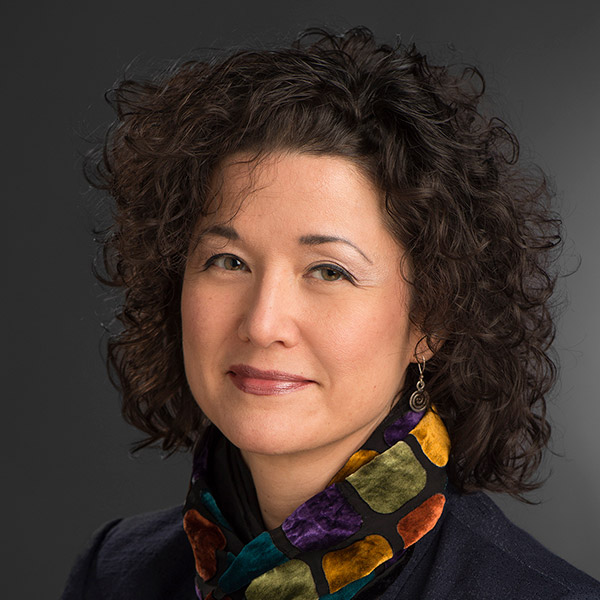Cha Ron Sattler-Leblanc

Cha Ron Sattler-Leblanc, PhD, is the Senior Director of the RIT Academic Support Center. One of her recent exercises on the importance of finding or creating learning communities included organizing the Tiger Autism Spectrum Support Group on campus to help family members connect on campus. Future plans include expanding the program to welcome families beyond the autism spectrum.
1. How Do You Teach Applied Critical Thinking?
I would like to change the question to: How do you teach an organization applied critical thinking? It is easy to get caught up in the busy-ness of our day to day work. Carving out time to do the “important, not urgent” work can be a challenge. While our campus and community evolves, our core work remains the same: supporting student academic success. What role does critical thinking have to an organization? Well, simply, everything.
The Academic Support Center is entering a final stage of our self-study which has given us opportunity to think and reflect. As the individual charged to serve and lead this team, I’ve found the process incredibly useful (which is good, because it is a lot of work!). The structure of a self-study can provide the opportunity to have conversations across an organization to distill and reflect on what we’re doing, how we’re doing it and develop methods that will continually improve our service to students.
2. Why Do You Think Applied Critical Thinking is Important in Your Domain?
Communicating and thinking as an organization can be difficult. As we often note in the ASC, there are a lot of moving pieces. I’m always looking for “real estate” to think over the noise, keep on-going concerns and politics in context, and as best as possible, “use all the brains I can borrow.” Critical thinking for an organization needs structure and facilitation, opportunity for dialogue, occasional conflict and lots of communication.
Thinking critically is a constant task when serving others, whether students or a team. If you’re doing it well, it is work and you always wonder how you might do it better. If it feels easy, you’re leaving some important voices and ideas out of the process.
3. Can You Share a Story Where Quality Applied Critical Thinking Was Key to Your Success?
This past year, the Academic Support Center was charged to complete a self-study, “a candid assessment of the state of the department.” The objective was to identify strengths, opportunities for improvement, and future direction to strengthen the department. We took a deep look at each program, reflected on our history as a department, considered how we operate within the larger context of RIT – and most importantly, examined our role in serving students.
In early summer, Dr. Michael Palanski, Associate Professor in the Saunders College of Business, and research partner Dr. Michelle Hammond from Oakland University, facilitated a retreat for us. The retreat provided time to reflect on our initial findings from the self-study, our history as an organization, and yielded a revolutionary way of understanding our department that is so often under change. Since that time, we’ve distilled four core values to our work: Students, Learning, Collaboration, and Continuous Improvement.
Fostering critical thinking is how we support student success in the Academic Support Center; more than teaching study skills, we help students learn HOW to learn. The experience of academic challenge is often seen as an exception outside of the hard, oftentimes independent work associated with study or knowledge acquisition. It is when we are pushed outside of our areas of comfort and experience that we truly start to learn, literally creating new pathways in the brain. It is when we discover how to conquer new territory by partnering with others, pulling in additional resources and bridging gaps to master what we need to know, that we learn as adults, learning for life, and not just the next assignment.
Learning opportunities are often accompanied by fear and discomfort, whether an individual, group or organization. Critical thinking provides the vehicle to identify opportunities and create new, robust structures to our knowledge. What I love about Student Affairs work is our opportunity to be that resource when students are at a critical moment to learn: when things are not going well and they tap into the wealth of resources that we have here for students both in and outside of the classroom. As a leader serving an organization, I’m learning to appreciate the same opportunities we have as a department. Using critical thinking to address and conquer problems can help individuals and groups to evolve as stronger learners for the effort.
4. How Do You Use Critical Thinking in Other Areas of Your Life Outside of RIT?
Palanski and his colleagues’ research on leadership development is a framework I keep returning to: The work we do in any aspect of our lives informs the work in all of our life roles. I am active volunteering for a national organization. No doubt my experience in programming and education has helped in my volunteer role, but watching an organization develop and transform rapidly has helped me to better understand my role at RIT. I also see how my role as a step-parent navigating services for students with autism has exponentially impacted my understanding of student learning and what their families’ experience. To be honest, I bring my own difficulty in navigating new systems to my practice: How can we keep things as elegant and simple as possible, recognizing the immense noise that any newcomer experiences when entering our systems and learning communities?
5. Any Last Critical Thoughts?
While RIT is known for our bricks and technology, people are the engine of our learning community. Our learning community works best when we consider our roles and areas of influence, capitalize on the brains and communities around us, and use our knowledge to serve others.